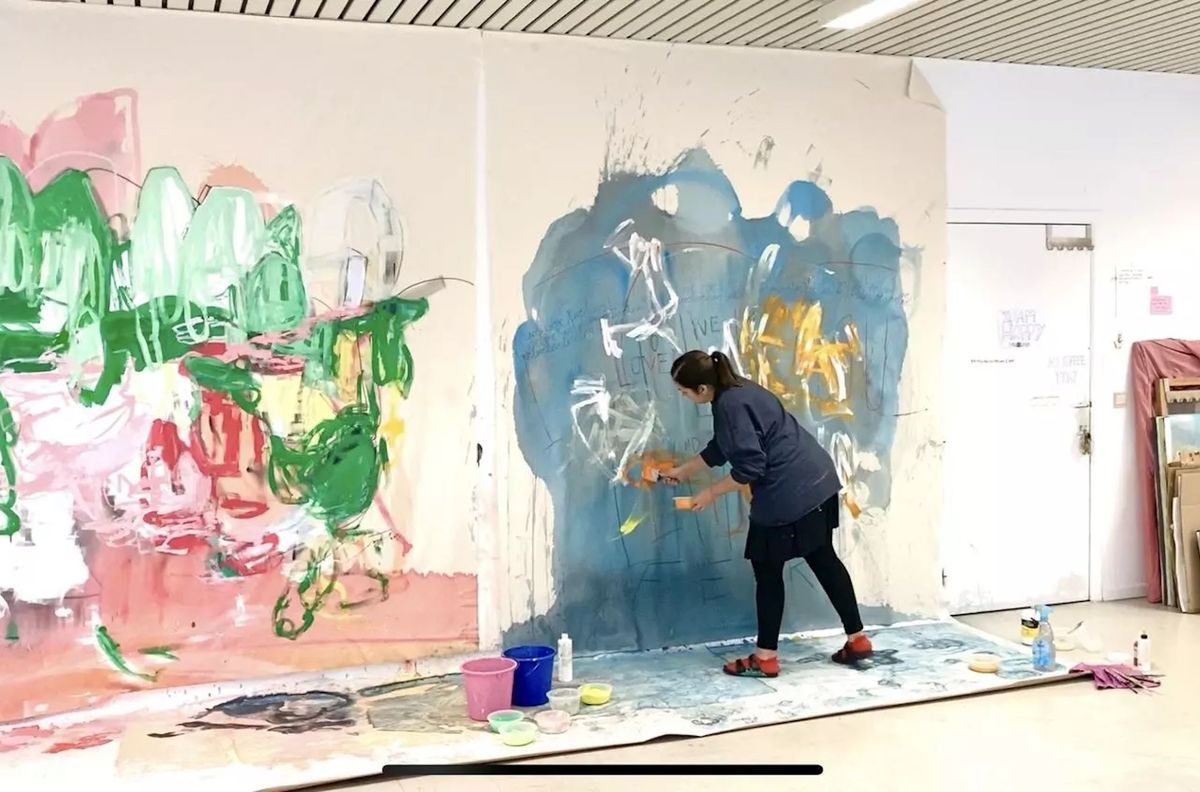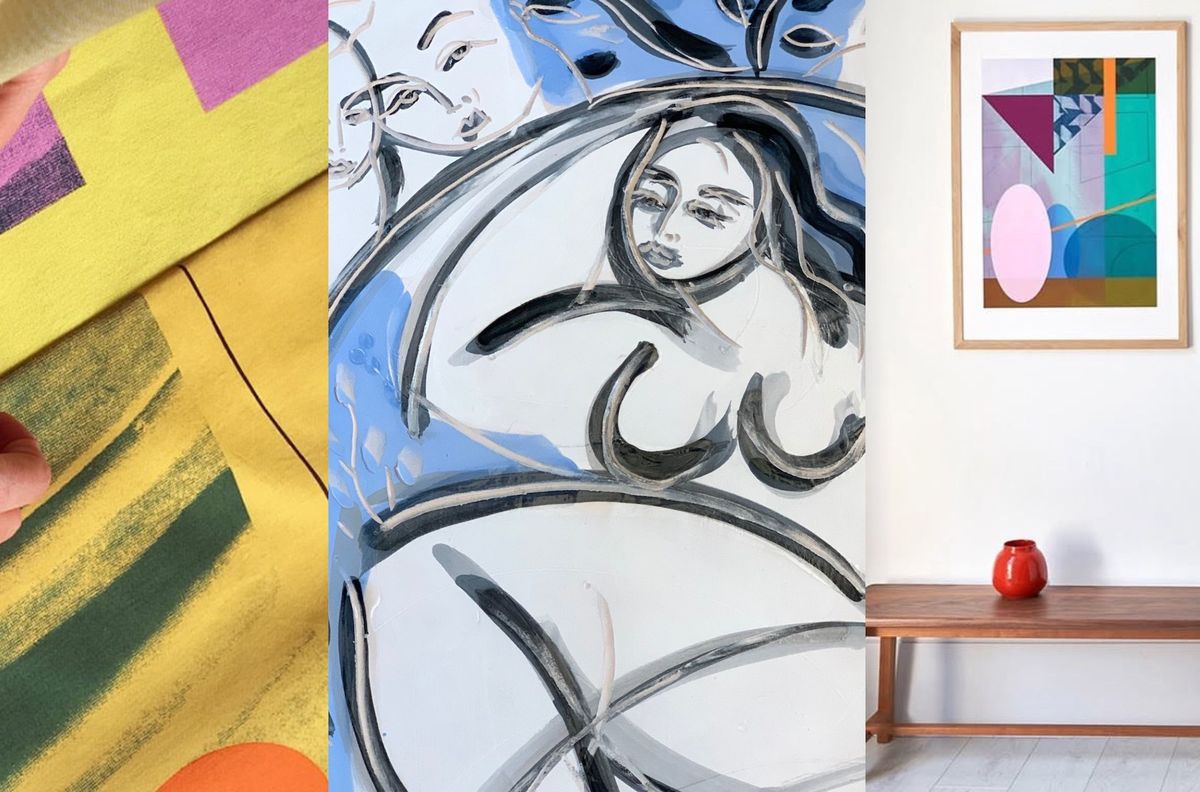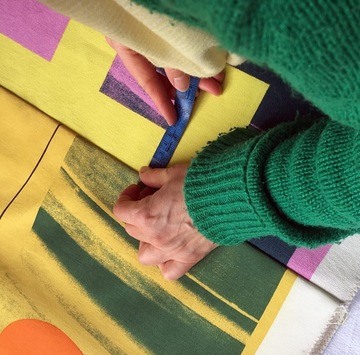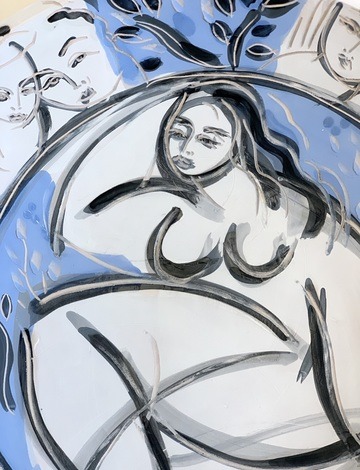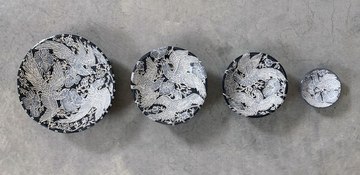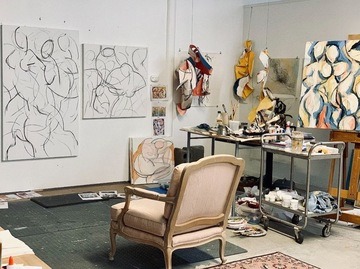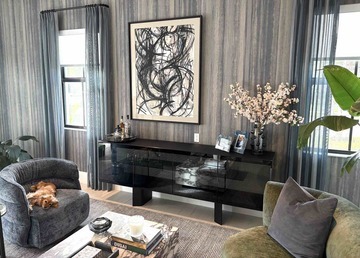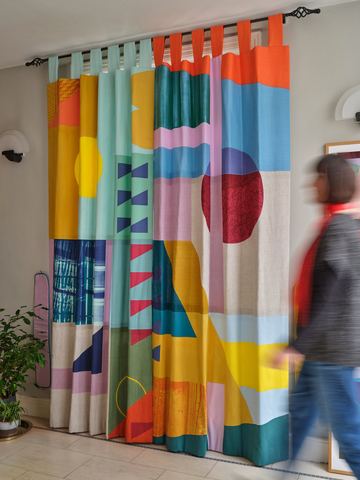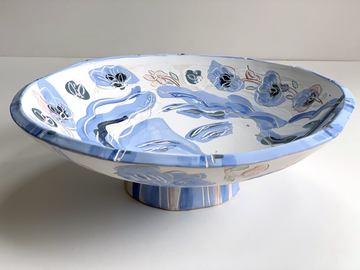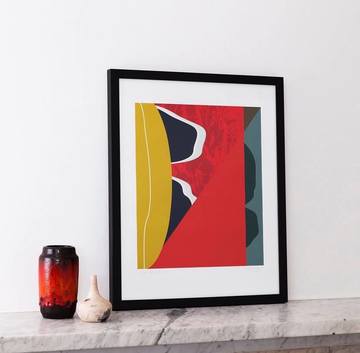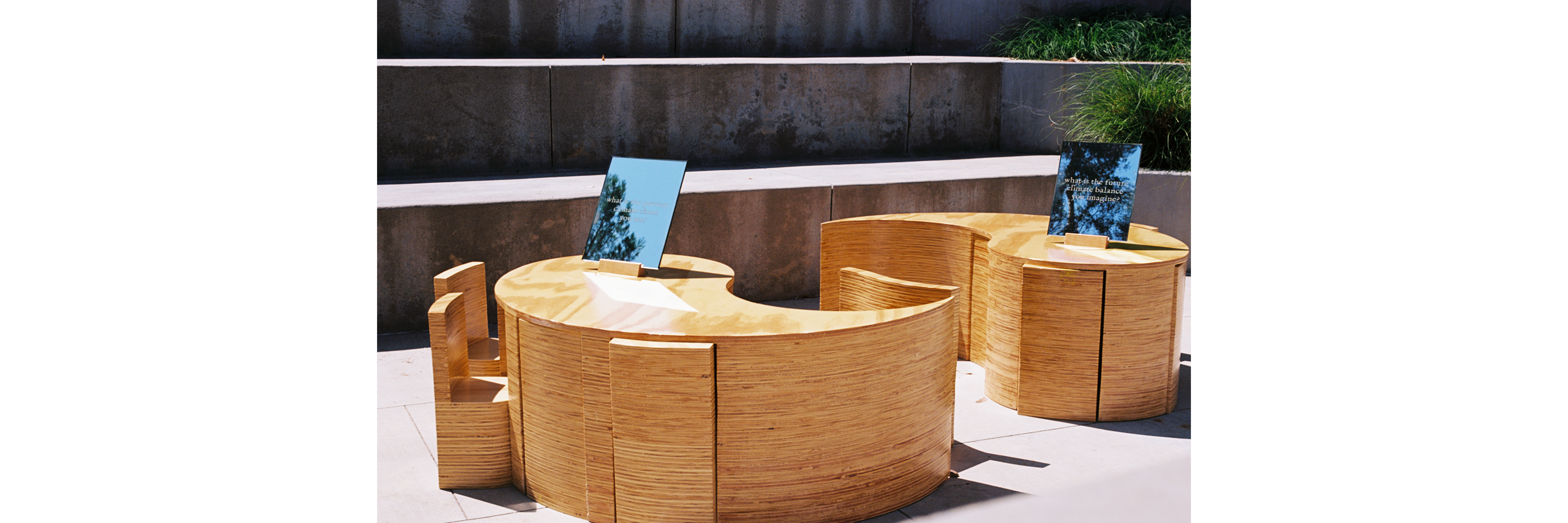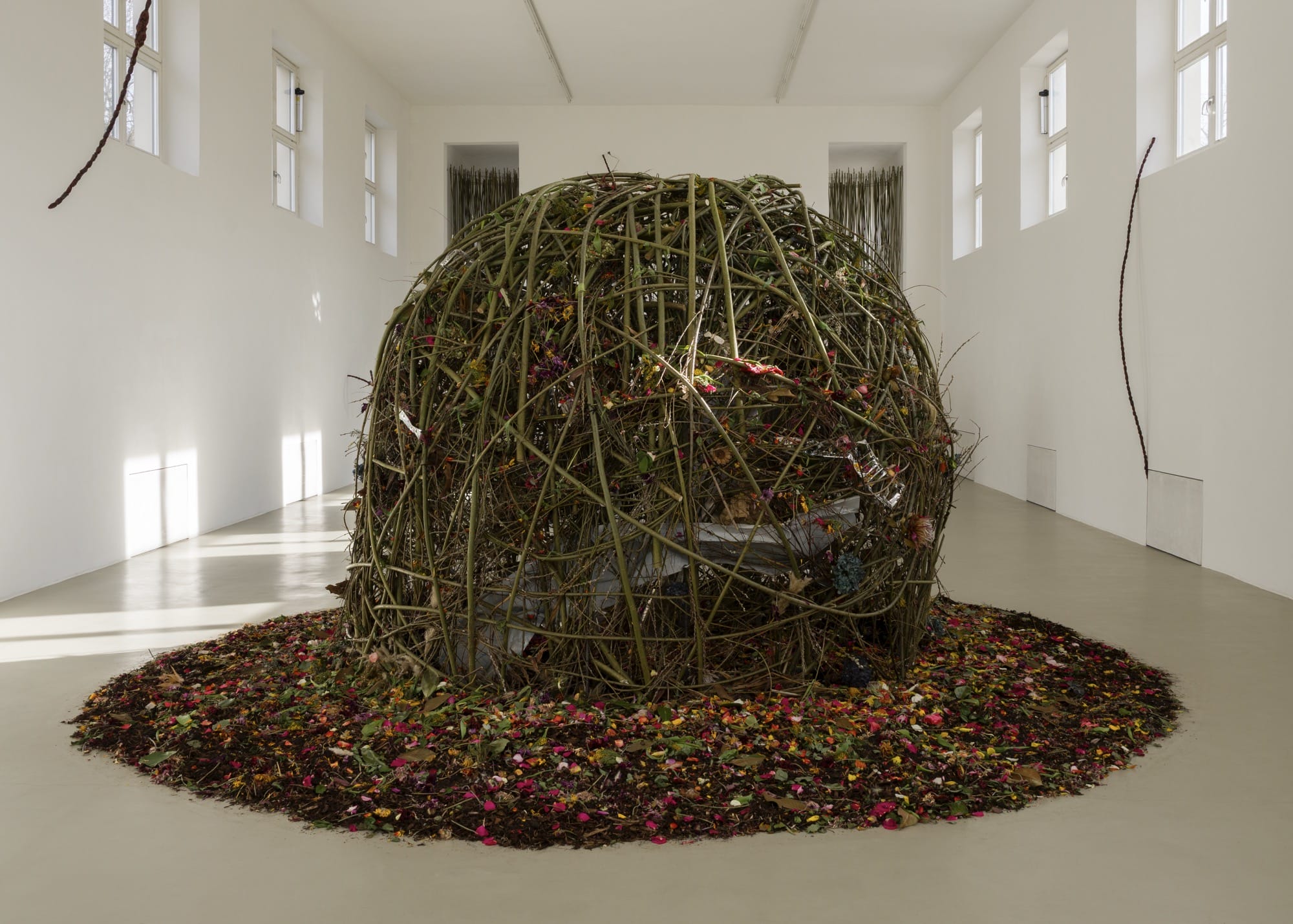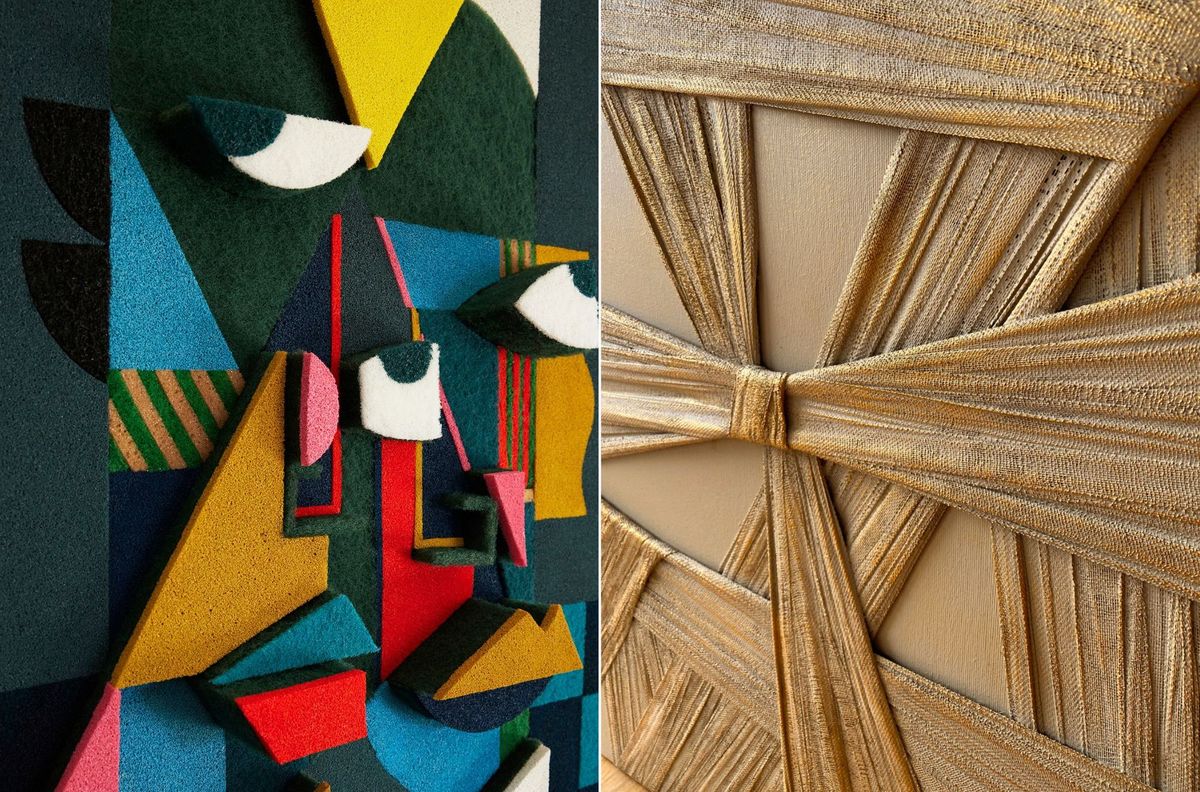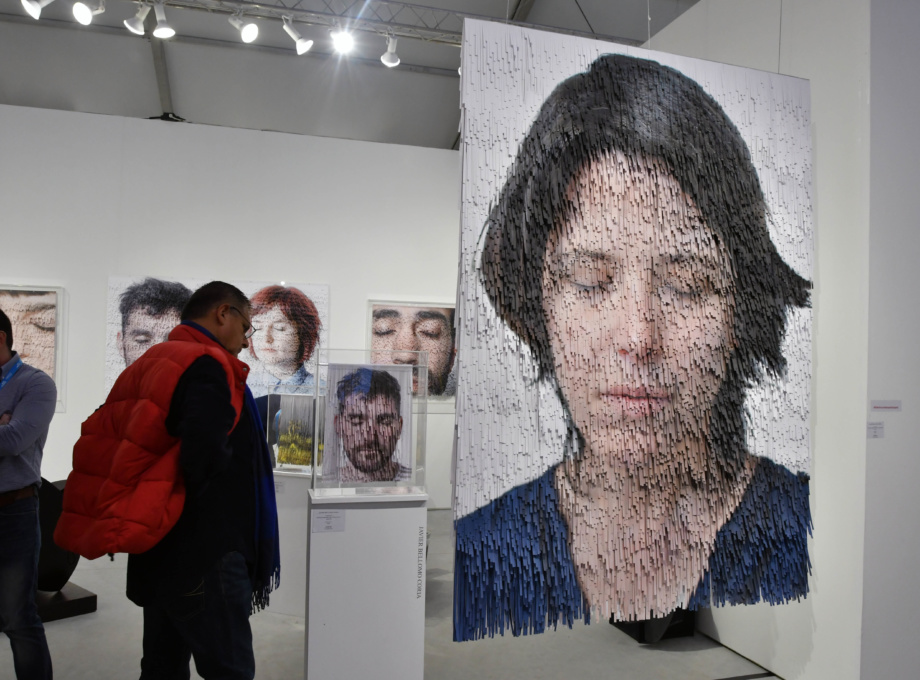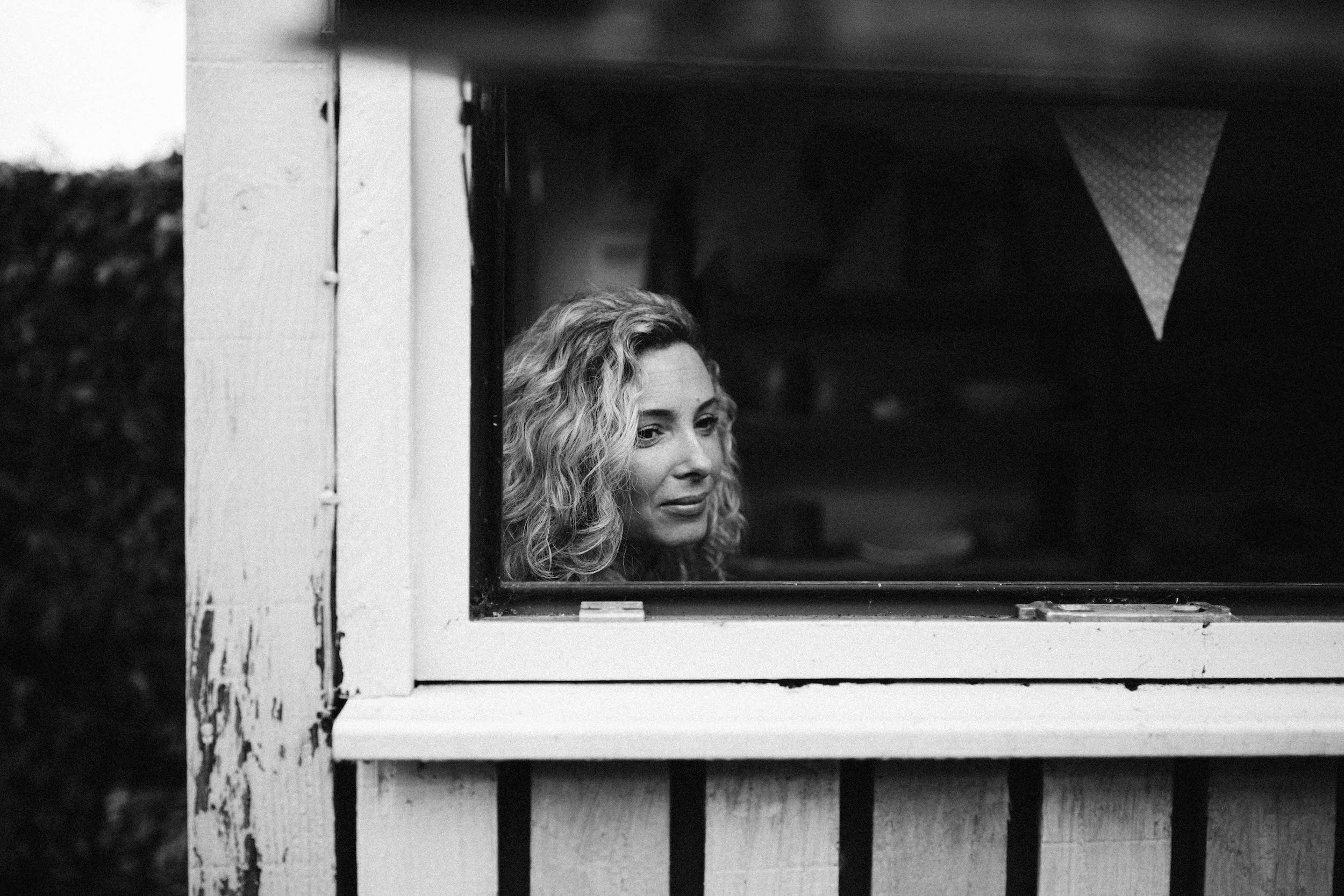Your work delves into the invisible life of emotional and sensorial experiences. How do you translate such intangible feelings into the physical act of painting?
Well, it’s something I was doing without realising it at first. For me, painting is a physical activity. I don’t start with a thought—a plan—or the intention to translate something specific; I just prepare a canvas and begin, following my impulses and desires. I feel good when I’m fully immersed in this activity. Over the years, I’ve come to realise that I’ve been translating sensations. At different times, I’ve depicted my organs, like my lungs and kidneys. I even painted recognisable faces without noticing them at first; I had to turn the canvas to see them. So, essentially, I paint what impresses me—not by choice, but because it naturally emerges.

I’m a highly sensitive person, and that means many things—one of which is that my senses are heightened. I pick up much more information than the average person, whether it’s the energy in a room, or the subtle changes in people’s moods, feelings, or intentions. Painting is my way of digesting overstimulation. I think it’s fascinating to see these invisible aspects of life take shape in the form of an image. It’s like crossing senses—smelling music or tasting an image. It feels like an alchemical process as if I’m cooking a picture. I could probably paint something else, but it wouldn’t feel authentic. Plus, I love the thrill of watching something I’ve never seen before appear in front of me.
You describe your gestural abstract paintings as encouraging the “body’s intelligence to flourish.” How does your body inform your process, and do you see it as a tool of expression or a collaborator?
The way you ask the question makes it seem like my body is something separate from me, like a tool I use, almost as if my body were a brush. But it’s not like that. It’s more about creating space for my energy to extend onto the canvas. Through this, I depict who I am in all my complexity and context—beyond materialistic constructs like gender or belief systems. Maybe it operates on a more energetic level.
My studio is a safe space where I can explore authenticity, whatever that means in each moment, including authentic movement. Whether I feel like dancing one day or sitting still the next, all these emotional states find their way into my work.
My practice is also shaped by experimenting with my body—through yoga, meditation, and breathing exercises—that help me connect my mind and body. This connection is essential for my well-being, especially since I tend to live in my mind. Our bodies are incredibly intelligent, and if I pay attention, the sensations guide me toward the best choices and outcomes in my work.
How does your fascination with fluidity manifest in your painting practice, and do you see the concept of fluidity as a metaphor for your emotional or creative life?
Fluidity reflects the essence of life for me. In my painting practice, I pursue fluidity in both decision-making and materials. I seek to be in contact with water, both when I paint and in choosing the location of my studio, as context greatly inspires my work. This may explain why I don’t enjoy working with dry mediums or being in dry places and why I prefer paint.

Since moving to Belgium, I’ve become much more aware of the elements, especially water and wind, which are more present here than in Barcelona. Volunteering in two permaculture projects before moving also taught me a lot about nature. Now, I spend time wandering in the Sonian Forest, paying attention to trees, plants, insects, and animals, which deepens my connection to the natural world and the elements. I also go often to the coast to experience the empty vast beaches, tides, dunes and wind. Fluidity feels more literal than metaphoric, although perhaps it operates on both levels at once.
The concept of freedom is central to your exploration. In your opinion, is true freedom a physical experience or more of a mental construct? How do these philosophical questions unfold through your work?
I believe freedom needs to be a physical experience. I try to embody that sense of freedom through movement and action when I’m in the studio. It’s reflected in the way I work—my methodology when painting and using text—almost like nobody’s watching. My brushstrokes, in a way, carry this quality, as if freedom is part of the DNA embedded in them. It’s something I strive for in my practice, and I hope to bring that same experience of freedom into my relationships with others.
Colour plays a central role in your work as a representation of frequency or energy. Do you consciously select colours based on these energetic qualities, or do they emerge more intuitively through your process?
Lately, I’ve been grappling with the term “intuition.” It’s vital to both my artistic practice and my life, yet it can be undervalued in painting. Listening to my intuition often leads to choices that feel right and bring me joy; it feels like my best form of intelligence. However, I worry that relying solely on intuition might suggest a lack of effort or depth in my work.

I believe that truly engaging with my intuition is a significant undertaking. I often set aside time to wander the streets, allowing my instincts to guide me without a specific plan. It’s not only a way of living but also a quiet rebellion against the dominance of the rational mind—the left brain, which still holds too much sway in our lives. When I look at nature, I don’t see the rational mind at work, yet nature functions perfectly. Intelligence, to me, includes much more than just logic; intuition feels like a natural, inner intelligence.
When it comes to colour, I consciously select hues based on their energetic vibrations. I feel drawn to certain colours, and this attraction shifts frequently. I spend a lot of time painting in sketchbooks, experimenting with a broad palette to visually train myself. I’ve learned that relying solely on intellect in choosing colours can prevent the magic of unexpected discoveries during the process—especially when mixing colours in response to the moment.

You express a deep connection to the musicality of language in your text-based art. Could you explain how this sonority and rhythm influence the way you work with words, and does this overlap with your approach to visual art?
I think it’s about how much attention you pay to sound, how well-educated your ear is, and the subtle awareness of musicality. It may also have something to do with the way my brain works, but I can’t say much about that. When I was born, my older sister was already playing the piano at home, and she continued throughout my childhood. I also played the piano for a while, and music was always present—we had records playing constantly. In many ways, music has been my companion. It teaches me, helps me connect ideas, and evokes feelings. I’ve always been drawn to rhythmic sounds and patterns, and I think I naturally have a mind for beats.
In my artistic practice, text feels like the beat—structured and rhythmic—while abstract painting represents the melody, flowing and emotional. I often think of my work as creating visual music, where the two overlap. There’s a connection between text, sound, and visual art in my mind that I haven’t fully analysed yet, but I think it’s tied to the body-mind relationship that interests me deeply.
You say, “We are nature.” How do you see the role of nature, not just as a subject, but as an active participant in your art, particularly in your installations?
When I say, “We are nature,” I’m thinking about how our organic bodies function on their own, mirroring the rhythms and cycles of the natural world. It’s amazing to reflect on! In contrast, there’s a stark dissonance when we exist in concrete jungles, surrounded by car exhaust and hard edges—it feels so far from our essence.
In my installations, I strive to create spaces where people can connect with a sense of freedom and reflect on their emotional state in the present moment. I invite others to tune into their senses, encouraging a deeper presence. This approach is a natural extension of the way I’ve chosen to live my life.

You mention that the resolution in your work must “organically grow from the process of painting itself.” Could you explain this approach?
In the beginning, my approach was more aligned with action painting. I had to physically throw away feelings of discomfort, and that technique appealed to me. Over time, I experimented with different supports and states of being—painting quietly, sitting or standing, on the floor, on the wall, on a table, or standing while painting on a table. I also explored painting from various emotional states, developing this vocabulary on my own. I’ve learned that overthinking a painting rarely leads to satisfying results, and I’ve recognised the importance of letting go when I get stuck.
Confidence, I believe, is key, and I’ve gained it through practice. My gestures have become bolder and more assured over time, allowing me to better distinguish what to keep and what to discard. I’ve also realised that my spontaneity and playfulness operate within a framework—a method I’ve developed that evolves with me. While my work may appear spontaneous, it’s built on preparation through bodywork, healthy habits, and exercises such as morning pages or intuitive walks. That doesn’t mean I don’t struggle; I often do, but always return to what feels right.
I’ve come to believe that every artist needs to find their own methodology for creating. I realised this after visiting many artists’ studios. I used to think it was obvious, but I’ve learned it’s not for everyone. Artists who feel lost in their practice might be forcing themselves into something that doesn’t come naturally, which, in my view, is the wrong approach. Whether in art or life, forcing things rarely leads to true, organic development.

How does your creative process serve as a means of introspection or personal transformation? Do you find that it helps you understand or process your own experiences as much as it expresses them to others?
For me, creating is a dialogue between my left and right brain—between thought and feeling, or what I see as a balance of masculine and feminine energies. This process feels like a form of self-therapy, a quiet yet profound way to understand myself better without needing to talk about it. This introspective journey aligns with what Dr. Elaine Aron describes as the experience of a highly sensitive person, where there’s a constant drive for insight and understanding.
Yes, I believe my work does help me process my experiences. I’m less certain about how much of that reaches others, though. While many artists hope their audience will find their own meanings, I’m less focused on any specific interpretation. My hope is simply that my work resonates on a sensory level.
I’ve found that people who share similar sensibilities tend to connect with my work. I’ve received positive feedback from respected industry figures, but I try not to dwell on how others perceive it. For me, the most important thing is that my creations feel true to who I am.
